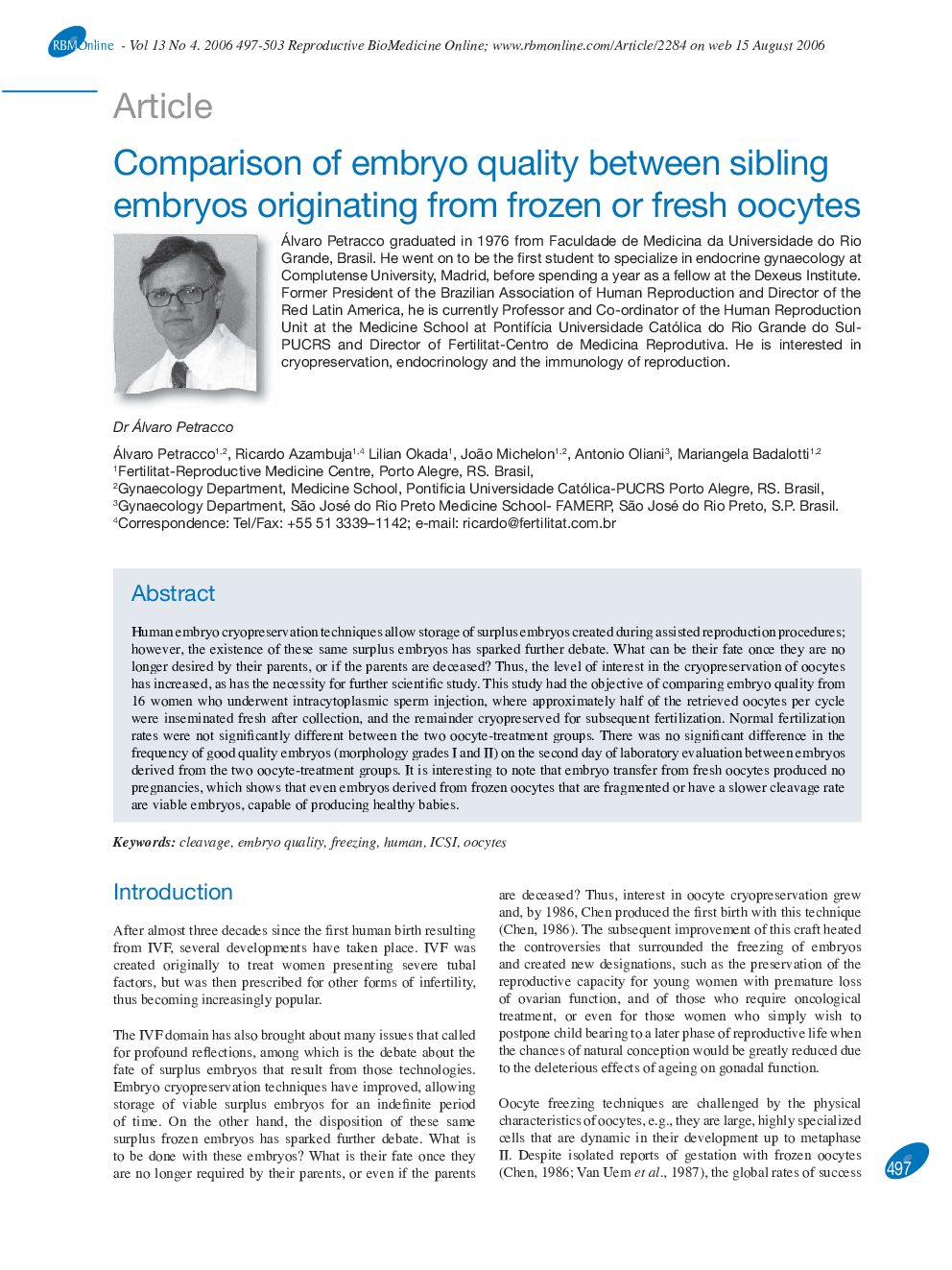| Article ID | Journal | Published Year | Pages | File Type |
|---|---|---|---|---|
| 3973436 | Reproductive BioMedicine Online | 2006 | 7 Pages |
Human embryo cryopreservation techniques allow storage of surplus embryos created during assisted reproduction procedures; however, the existence of these same surplus embryos has sparked further debate. What can be their fate once they are no longer desired by their parents, or if the parents are deceased? Thus, the level of interest in the cryopreservation of oocytes has increased, as has the necessity for further scientific study. This study had the objective of comparing embryo quality from 16 women who underwent intracytoplasmic sperm injection, where approximately half of the retrieved oocytes per cycle were inseminated fresh after collection, and the remainder cryopreserved for subsequent fertilization. Normal fertilization rates were not significantly different between the two oocyte-treatment groups. There was no significant difference in the frequency of good quality embryos (morphology grades I and II) on the second day of laboratory evaluation between embryos derived from the two oocyte-treatment groups. It is interesting to note that embryo transfer from fresh oocytes produced no pregnancies, which shows that even embryos derived from frozen oocytes that are fragmented or have a slower cleavage rate are viable embryos, capable of producing healthy babies.
